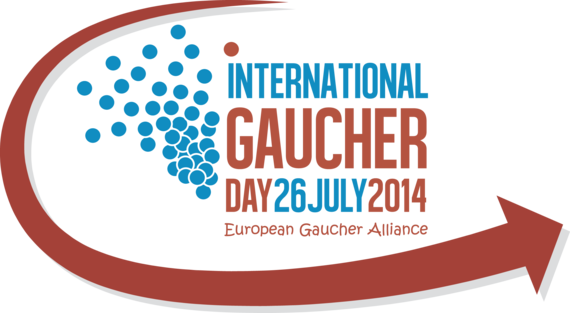
Saturday 26th July 2014, is International Gaucher Day, which is an appropriate date as it would have been Dr. Philippe Gaucher's 160th birthday, the very doctor who first discovered this rare disease in 1882. The European Gaucher Alliance are encouraging people to mark this day in some manner, whether it be a sponsored walk, a tea party, wearing pins or t-shirts, or any number of effective and novel way you may come up with to raise awareness of Gaucher disease. The European Gaucher Alliance have chosen a very fitting slogan: "Rare but not alone"!
This slogan is a powerful reminder how suffering any rare disease can be a lonely and worrying journey to travel. When parents are informed of such a diagnosis, it affects the entire family. I was diagnosed at the age of five with Gaucher, and understood from a young age that two of my brothers and I, had inherited a rare disorder from our parents that had no cure. Little information was known about this illness back in 1968, and my family and I were very much alone. The isolation, lack of support and treatment when suffering any rare disease is a huge problem. There are many rare diseases, most of which get very little exposure, and at times it can be a battle just to get heard.
I was born with Gaucher Type 1, which is the most common form of this genetic lysosomal storage disease, but there are in fact three types. You may not know or have heard about Type 2 and Type 3 which are rarer still. As the aim of the International Gaucher Day is to raise awareness, I would like to bring attention to Types 2 and 3 Gaucher disease, that are often overlooked.
Type 2 Gaucher is a very rare, rapidly progressive form of the disease which was previously called infantile Gaucher disease. Apart from affecting the spleen, liver, lungs and bones, as with Type 1, it also affects the central nervous system. It presents acute neurological involvement during the first year of life. By the age of 3 to 6 months, symptoms will often begin to appear. Most children with Type 2 Gaucher heartbreakingly die by the age of two years. Sadly there is no treatment available for Type 2 Gaucher disease at this time.
Type 3 Gaucher disease also has neurological involvement but not as severe as Type 2 Gaucher. Just as with Type 1 Gaucher, the symptoms usually include enlarged liver and spleen, along with an inability to eat and gain sufficient weight. These symptoms usually appear during the first year of life, but sometimes emerge later in childhood. There are serious problems such as eye movements, posture, mobility and other severe complications, with a shortened life expectancy.
To learn more about Gaucher Type 2 and 3 take a look at The Gaucher's Association Website, or an article from The Lancet. Bringing further awareness and hopefully a successful treatment for Type 2 and 3 Gaucher disease I'm sure is long overdue. Here lies the problem of suffering a rare disease, for the numbers of patients worldwide are small, so we need to speak up loudly and make their brave plight heard. You may be rare, but you are definitely not alone!